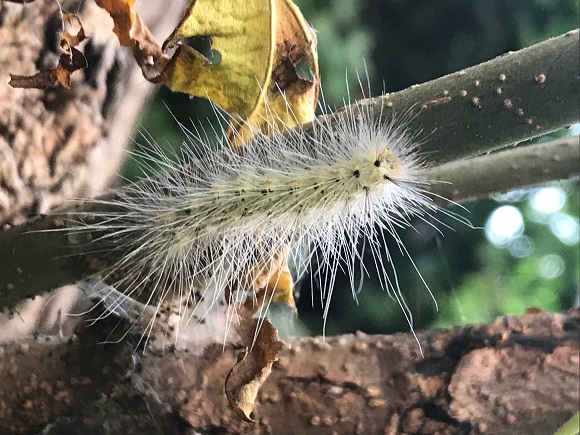It’s likely that you’ve noticed the presence of web-like structures in trees in your yard, in our parks and lining our streets. Those mini-tents are the work of a creature known as the Fall Webworm. Last year was a prolific year for Fall Webworms and this year is shaping up to be a good year for them as well.
In the spring, the pure-white adult moths lay eggs in grass or on the leaves of fruit and other hardwood trees. These eggs hatch into hairy caterpillars which spin webs around leaves and other structures. The caterpillars are relentless eaters, skeletonizing their host leaves. After a period of time they break through the nests and continue their feeding frenzy. By fall, they’ll completely denude a tree long before the leaves are ready to naturally drop.
While this action makes trees unsightly, it actually doesn’t harm trees that are healthy. You’ll see them grow back normally the following spring. The caterpillars tend to be everywhere, and throughout the summer many an unsuspecting backyard gardener will find the caterpillars falling on them or showing up in unexpected places. And what’s more curious is the amount of frass, or excrement, the caterpillars leave behind. It’s truly an astounding amount.
Although they are looked at as pests, the creatures are generally harmless and serve as a food source for birds like American Robins. The best course of action, therefore, is to just let nature take its course and let them be. Widespread outbreaks usually occur over 2-3 years’ time, so hopefully things will be back to manageable levels in 2020.



